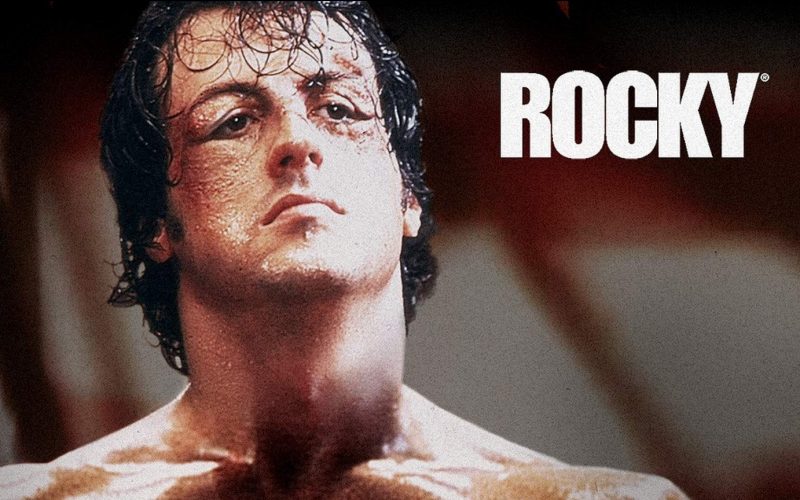Rocky (1976).
For many, Rocky is a boxing movie. Widely regarded as one of, if not the best in the sub-genre of boxing films, but for me it will always be so much more than that. Rocky is in many ways a parallel to its lead’s actual life at the time. A struggling soul, who up until then had been forced to stand on the side-lines and watch the parade as it passed him by. Beaten down and broken, the fire of ambition may have died down a little over the years, but upon receiving a shot at the big time, it immediately ignites inside him to become a roaring flame. A huge pyre that burns so brightly that the whole world has no option but to stop and stare, whilst simultaneously being drawn towards it. The original Rocky is the ultimate underdog story, instantly recognisable and relatable to almost any viewer through some scenario in their own lives.
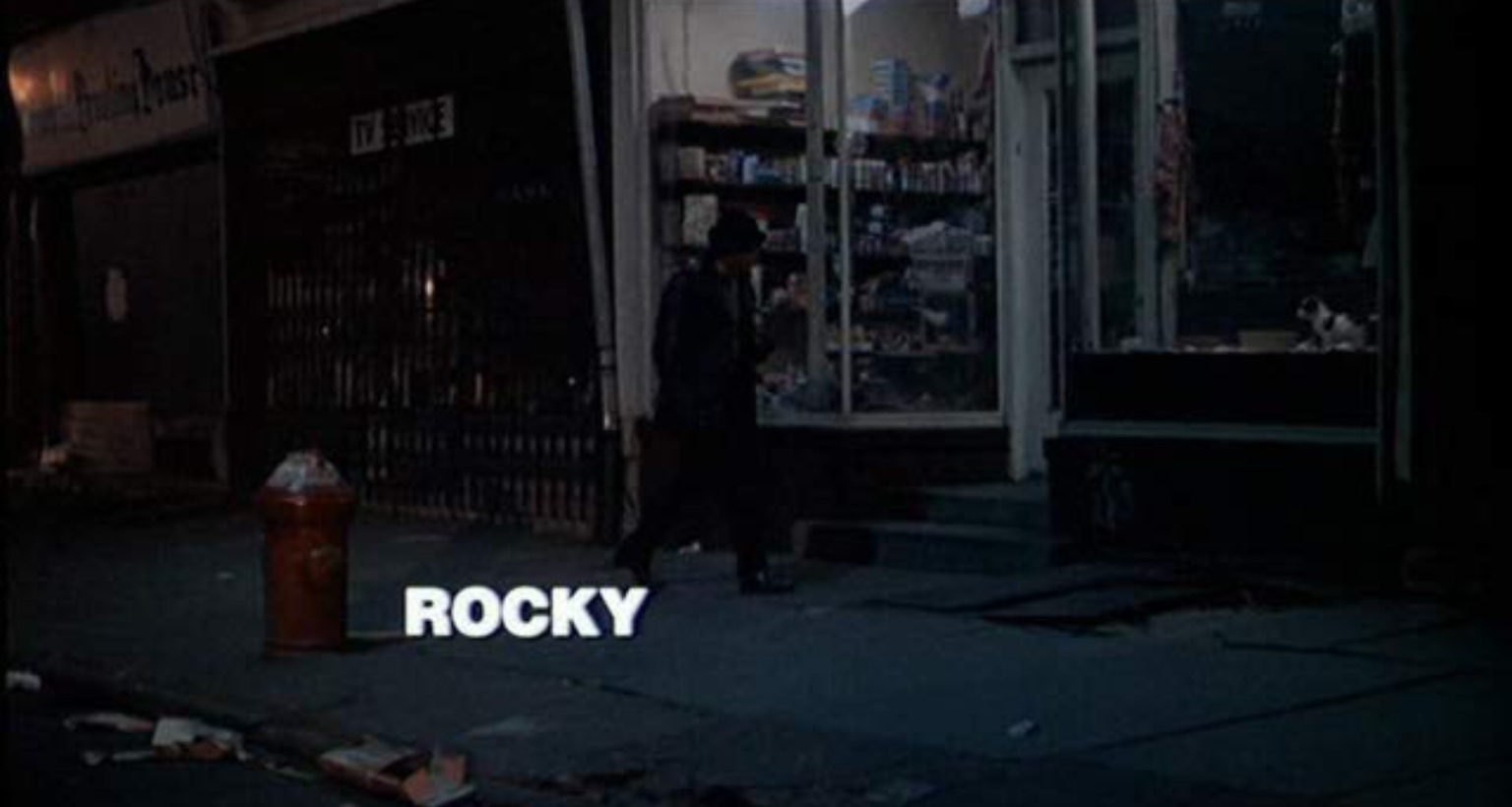
For Sylvester Stallone, life had not given him the best start. Being born during a complicated birth, where the doctors incorrect use of not one, but two sets of forceps had resulted in him being permanently paralyzed down the lower part of the left side of his face. His now distinctive snarl and slightly slurred speech was not something that casting directors saw as an attractive feature for a potential leading man during his initial foray into the world of film.
Struggling to make a break in his pre-Rocky days, he had found little-to-no success, starting off with extra work such as a restaurant patron, appearing opposite Robert Redford in a small scene in 1969’s Downhill Racer, followed by very small appearances in Woody Allen’s Bananas (1970), where he played a subway thug and then a street hoodlum in 1975’s The Prisoner Of Second Avenue in which he’s tackled by the film’s star Jack Lemmon who is of the belief that Stallone’s character is a pickpocket. Filling in the gaps behind such insignificant roles, Stallone even found himself having to take part in a soft porn movie, The Party at Kitty and Stud’s (which was later re-released after his big break in Rocky, in a rather blatant cash-in manoeuvre, where it was given the new title,The Italian Stallion). It was a role he would later admit he was forced to take when the then struggling actor found himself so poor that he was forced to sleep rough at New York’s Port Authority bus terminal.
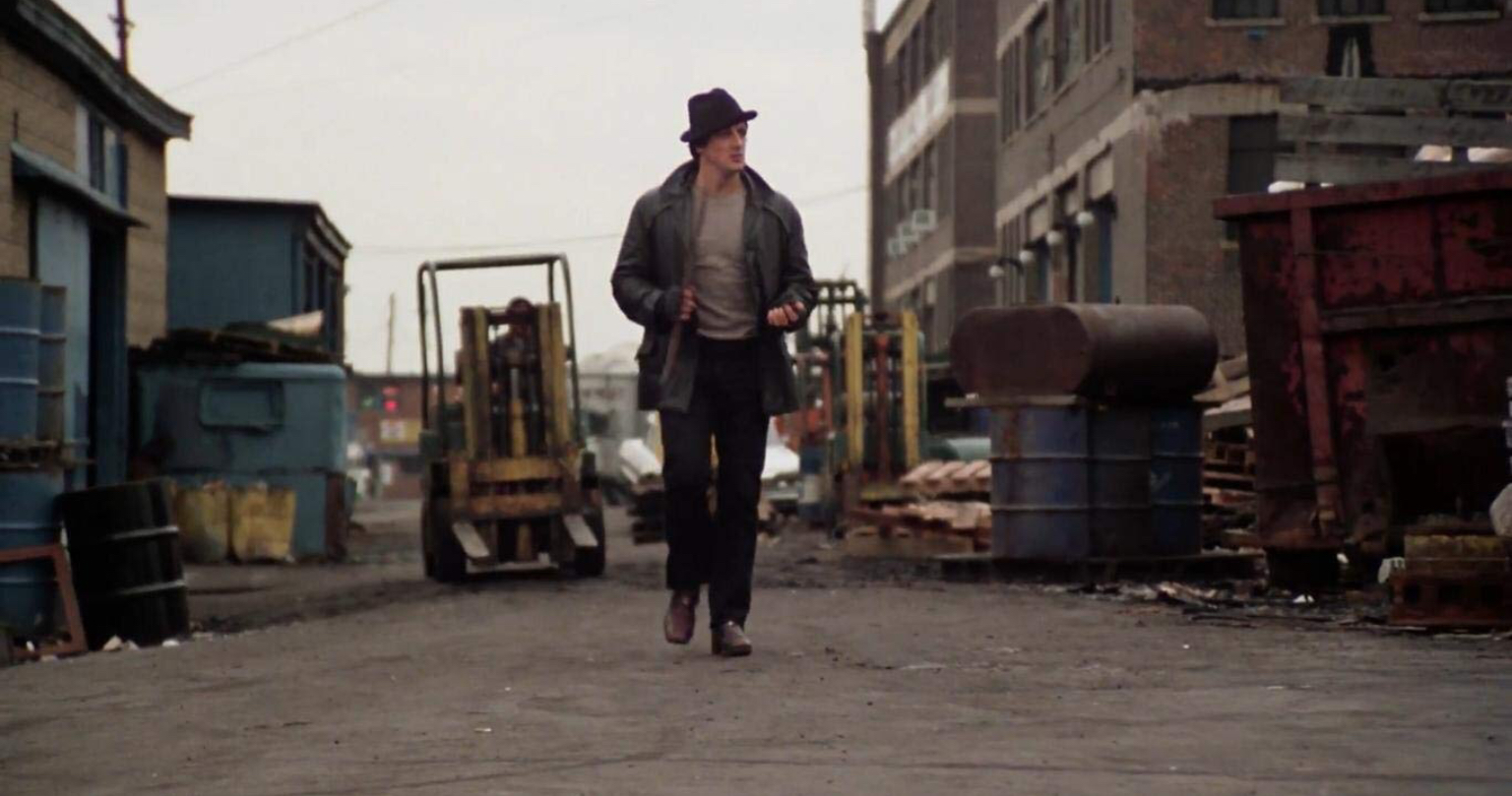
As his career started to take off to some degree, he would seemingly be confined to that of a “jobbing actor” and he managed to find some more significant work with brief appearances on the hit TV show Kojak and also found himself appearing opposite David Carradine in 1975’s now cult classic Death Race 2000, produced by Roger Corman.
It seemed apparent that he was never going to be a leading man. Stallone however, refused to come to terms with this fact and yet again, whilst finding himself struggling to make ends meet he found himself watching a boxing match between the legendary heavyweight champion of the world, Muhammad Ali and a far inferior but still talented slugger by the name of Chuck Wepner on the night of the March 24th 1975, and from then on, his life would never be the same.
In what would be the first bout for Ali after the notoriously vicious “Rumble in the Jungle” where Ali had been forced to absorb numerous rounds of punishment from the mighty blows of then champion of the world, George Foreman, using his now famous rope-a-dope technique to tire and eventually knock out the fearsome, younger and bigger man and in turn, reclaim the title. Ali had sustained a lot of wear and tear over the years, coupled with the beating that Big George had sent his way and that’s something that doesn’t bode well for a fighter in the long run as was sadly proven by the afflictions that Ali would suffer for a large part of the latter stages of his life.
Wepner had been picked as an easy defence for Ali to cash in on, but Chuck had other ideas that night and managed to not only last much longer than anyone had expected before being stopped in the last round. Unbelievably for those watching, he’d also managed to floor the over-confident Ali in the middle rounds of a bout that was rather crudely titled “Give the White Guy a Break”.
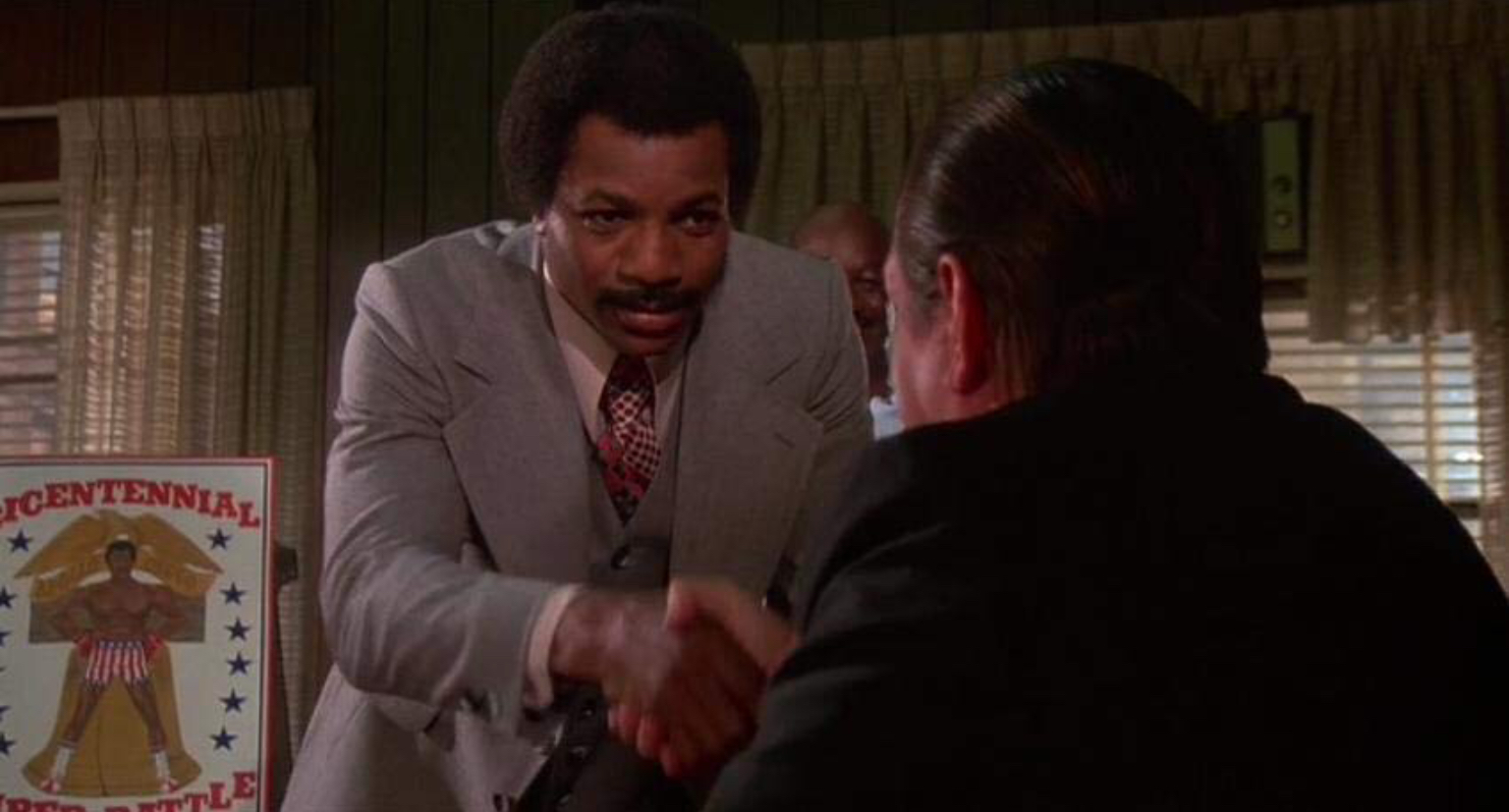
Inspired by the sheer guts and determination of Wepner as he struggled to stay on his feet during the match, a story quickly started to formulate in the mind of the struggling actor.
Stallone immediately started work on the story of Rocky Balboa, going home to lock himself away for three days to complete the first draft of the script, which Stallone would much later confess was starkly different to his end product. It’s said to feature a much nastier version of the now famously kind-hearted Rocky Balboa that audiences worldwide adore. The original take on the character is said to be much more in line with that of the finger breaking street thug that the finished film only alludes to. He’s trained by a far more racist version of Mickey Goldmill, who barks orders at him about black fighters being over hyped and so on. When sharing his original work with a close circle of friends, it soon became apparent to him that audiences would find it a struggle to root for a such a less than wholesome lead, and as a result, Stallone set out to soften the character’s rough edges by allowing Balboa to find love during his quest for pugilistic fame.
After schlepping the new version of his script around the film studios, trying to sell his finished piece, Stallone found rejection from many before the story of the Southpaw slugger finally found a home with United Artists and producers Robert Chartoff and Irwin Winkler, who delighted Stallone with their offer to buy the rights to the story, but then quickly sent him into a downward spiral with their offer being on the proviso that they take over from there and cast their choice of actor in the lead role, with established names such as Robert Redford, Burt Reynolds and Ryan O’Neil said to be top of their wish lists.
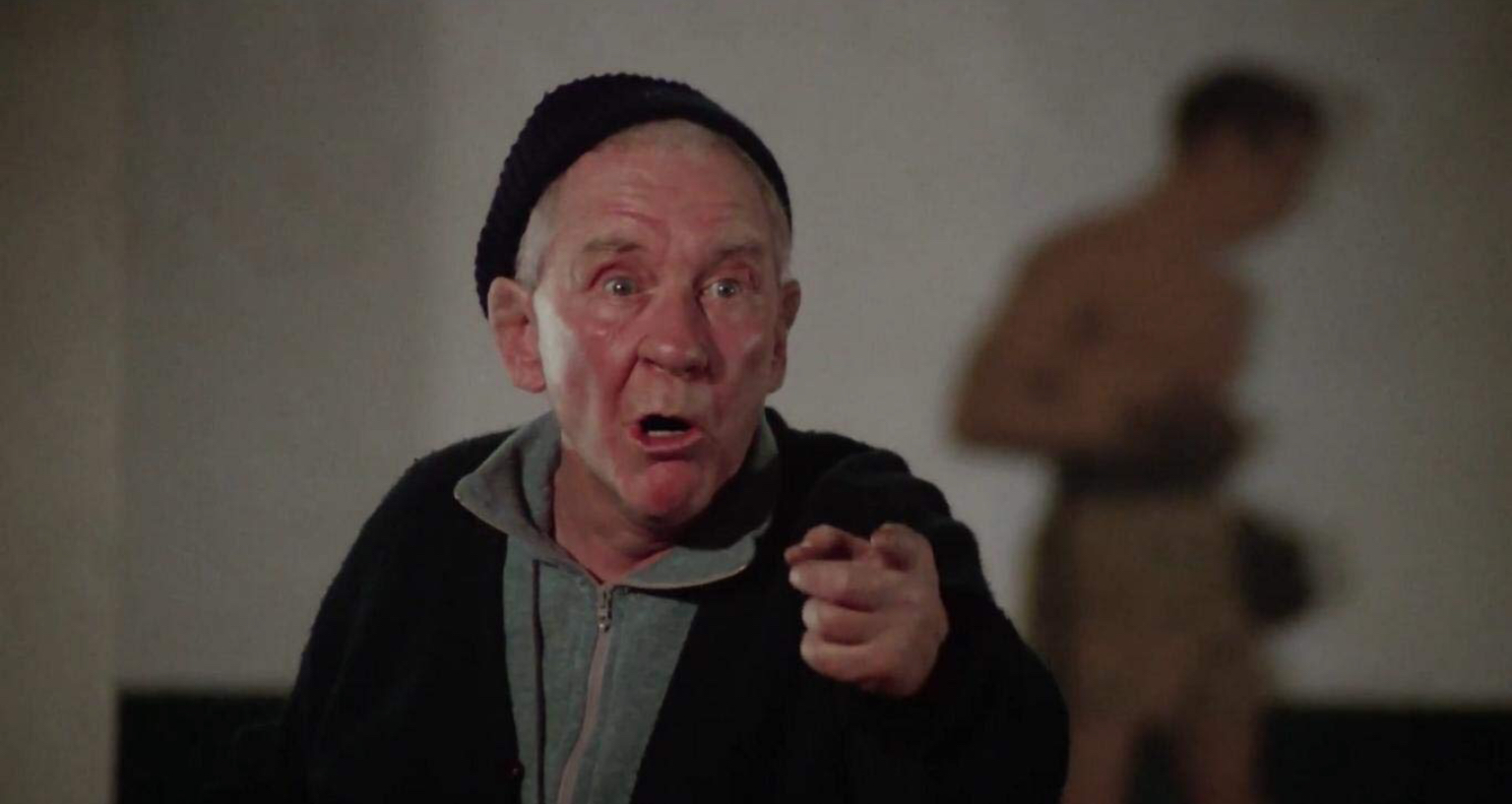
Much like the film’s original tagline, Stallone’s chances of succeeding in life seemed to have been a million to one shot up until now and he stood fast in his determination to play the role that he had created. As the days and weeks of negotiations passed, the offers to solely buy the script from him grew, eventually reaching a mammoth $350,000 which would be a hard offer for a fledgling writer to turn down even in today’s financial climate, let alone such an amount back in the mid 1970’s. Eventually Stallone won out in his quest to play Balboa, later admitting that he was so used to having nothing, that if his demands were not met, he was confident that he wouldn’t miss something he’d never had. United Artists eventually bought the script, with Stallone as the lead, for around $30,000 and even went as far as to have a clause written into Stallone’s contract that if he wasn’t convincing the studio bosses who’d be viewing the dailies, that he could be replaced at any time during the production.
In reality this clause was a toothless tiger as not only had Stallone written the character, he’d also lived and breathed its existence from script to screen. The cliche often used in the description of such an iconic a role is that the actor portraying them was born to play the role and that’s certainly the case with Rocky Balboa. Stallone is unfortunately often regarded as simply an action star but to describe his breakout role as such is an extreme disservice to him. In fact, Rocky is anything but an action hero. Flawed and isolated, Rocky makes ends meet by accepting low paying boxing matches at night and working as a debt collector for a local loan shark during the day and yet throughout all of this, he somehow manages to maintain a sense of honour. Making the decision to not break the thumb of a dock worker who’s in debt to his employer, rescuing (or at least believing that he is) Little Marie from the local street corner hoodlums, or simply in the form of the affection he displays towards his pet turtles. Throughout the grimy streets of Philadelphia, he strides through with a swagger not of arrogance, but rather that of a man who simply loves all of the people in his neighbourhood, almost in an unknown and silent precursor to the adulation that he’ll one day receive from them. Believed to be the underachiever going nowhere by many, Rocky may even accept this in his darkest moments and yet he’ll still instinctively shuffle his feet into position and shadow box as he walks along the sidewalk, as if subconsciously preparing for his one big fight. For all the machismo and outward masculinity, he’s a lonely man living in a rundown apartment, spending many nights in solitude perhaps trying to work out where it all went wrong for him. Is he in fact wondering how he never made it and whatever became of the young child he once was? The same child that now stares down at him from an old black and white photo, tacked to the wall mirror of his dirty apartment.
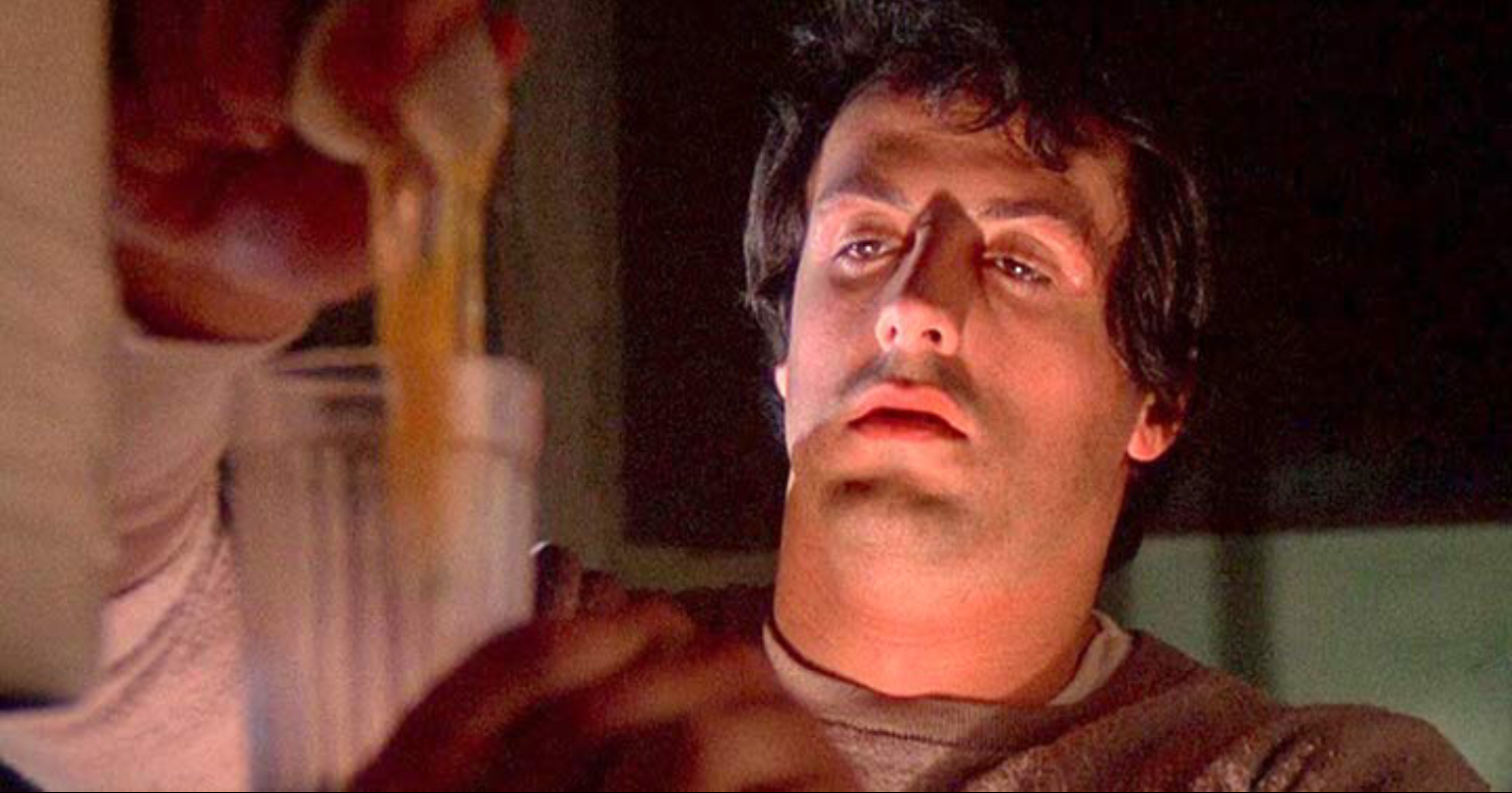
His trainer, Mickey Goldmill has all but given up on him prior to the setting up of the Creed match. Rocky’s locker has been cleaned out to make room for a younger, more promising fighter’s equipment. In the fiery confrontation that takes place in front of the packed gymnasium, the animosity they show towards one another is clear. Rocky feels betrayed and cast aside by Mick, that he’s looked upon as an old piece of meat, now way past its sell by date. Whereas Mick, although trying his best to hide it behind his gruff façade, cannot help but scream back of the wasted talent that his onetime heavyweight prospect has allowed himself to become. Mick angrily mocks the quality of the fighter Balboa has just faced in the form of the wonderfully named Spider Rico but, after being asked why he has cleared out the boxer’s locker, he explodes into an angry rant about how Balboa could’ve made something of himself. How he had the potential to achieve so much more than fighting bums for chump change and breaking limbs for his shady daytime employer. There’s a deep sense that over the years both men have given up on each other and drifted apart, as Balboa has failed to realize his potential in Mick’s eyes, with Rocky seemingly laying the blame of his demise at the feet of the tired, old boxing trainer.
Perhaps the most telling scene that highlights the now strained relationship between the two men, is when Mickey is forced to swallow his pride and visit Rocky at his rundown apartment to offer once more to train and manage him for the Creed fight. Mickey is the epitome of the old pug, one who has taken way too much punishment during his career. Battered and broken down, he seems at odds with his opinion on the game. Happy to show Rocky old press clippings of his winning fights that he carries around in his wallet and in the next breath sharing the horror of holes being punched in his face by an opponent using loaded gloves. The fact that Rocky fails to make eye contact with him is not lost on the older man but he persists to ramble on, hoping that the two men can somehow manage to find some common ground. Rocky’s replies are curt and short. He’s now at the point where he no longer feels he can trust Mick after the betrayal of years of neglect and after mumbling his rejection of Mick’s proposal, he actually walks away to the bathroom, closing the door behind him as Mick continues to try to reason with him. It’s as if he doesn’t trust himself not to lash out in anger at the older, smaller man, as he cries out in anguish. “What about me Mick? What about my prime?” A piece of dialogue akin to Brando’s famous ‘Contender’ speech years before, before chasing the ambling old man down the road to accept his offer and offer something of an apology for his earlier outburst.
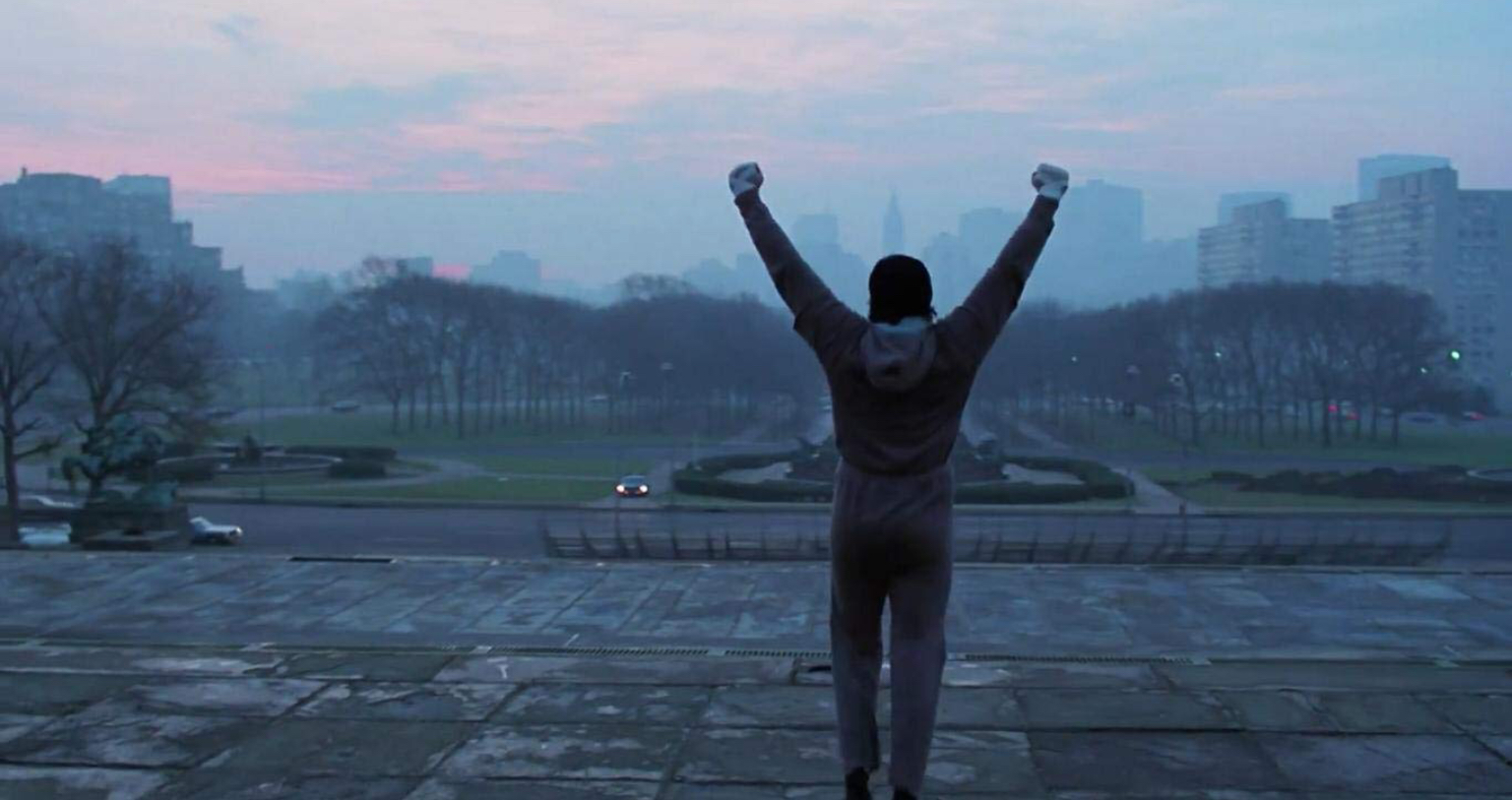
Burgess Meredith already had a long and distinguished acting career prior to Rocky but will now forever be linked to Mickey Goldmill. With his face bearing the wages of age and his gravel-filled voice lending marvelously to the character, as he sounds off in loud angry bursts that pass off like a mixture of an old Jimmy Cagney-esque gangster and Popeye the Sailor. The old sage imparts his wisdom with a sledgehammer like grace, with no patience remaining at his advanced age to take the time to explain his instructions.
Mickey is of course a vital piece of the Balboa jigsaw as Rocky struggles to somehow piece his life together through this once in a lifetime opportunity. It’s the emergence of love that causes another upturn in Rocky’s life. It’s unclear how long he’s been pursuing the shy and retiring sister of his best friend Paulie, but there’s something almost childlike in their initial encounters as he visits her pet store workplace each day to tell her a joke and hopefully break through to her somewhat detached personality. Adrian is painfully shy and, on the surface, completely the wrong choice for Balboa. Talia Shire is almost completely unrecognizable from the effortless, quirky beauty that she could naturally show. She, much like the character she portrays is content to be hidden behind a pair of thick rimmed glasses and buttoned up coat, complemented with an over sized woolen hat. Adrian is perhaps on the surface afraid to speak up, but it’s later explained that she has grown up in an abusive household, a product of deceased parents with an older, alcoholic brother in the form Burt Young’s effective performance as Paulie. To play a drunk convincingly is quite an achievement, with Young never allowing his performance to fall into that of caricature. Young certainly steals the scene when he returns home inebriated on the night of Thanksgiving. He berates Adrian before smashing up the family trinkets that adorn an old dresser with a baseball bat, all the while chewing on a turkey leg like some kind of rampaging ancient warlord.
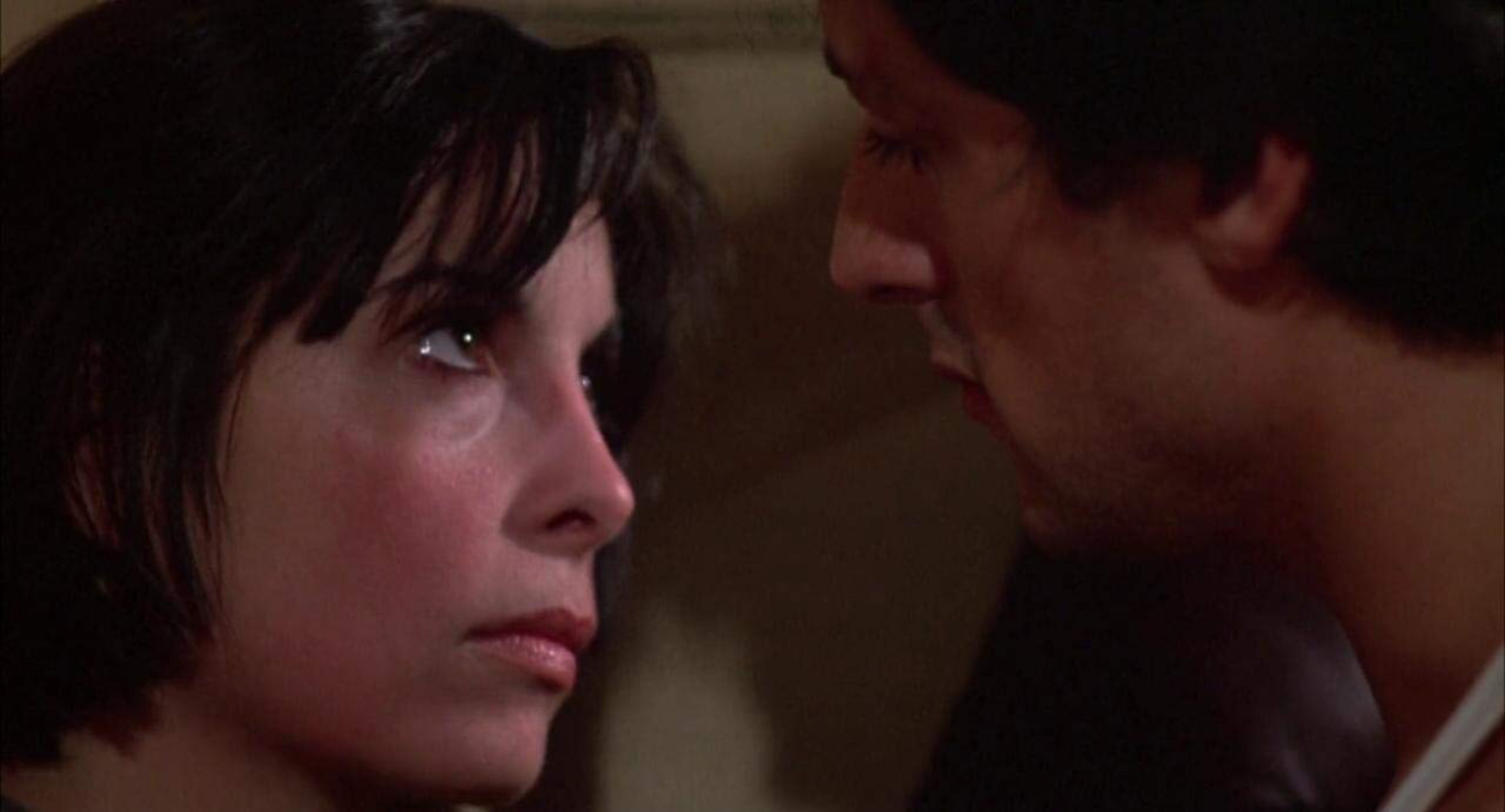
Paulie is a classic example of a broken-down loser who still somehow thinks that he’s due Adrian’s thanks. His reasoning being that as he’s provided a roof over her head, she should in turn be his domestic slave and is one that you feel Adrian has had to endure for most of her life, to the point that she’s almost become conditioned to believe that he’s right. Paulie rants in a mixture of the bizarre angry drunken reasoning that one would associate with a man full of booze and yet the telling factor as he raises his voice, is that he somehow blames her for stopping him from attaining the life he was destined to have. When Balboa eventually restrains him, the wounded cries of anguish that Paulie lets out provide a window to the daily inner torment that the aging drunk suffers. He’s a man at odds with where he’s landed in life and is looking for someone else to shoulder the blame. You easily form the impression that this older sibling has been wrongly blaming her for his woes for probably most of her life. This is not to excuse his actions of course, he is the very definition of a domestic abuser and from his earlier conversations in the film it’s almost as if Paulie is giving Adrian to Rocky as if she is his property to do so with as he pleases.
Rocky rides into Adrian’s life not as a Prince Charming to save this urban Cinderella, but rather as her only viable route of escape and yet as the couple grow stronger, they manage to lift each other up from the pit of despair that each had found themselves in. As much as he’s now her protector, she is now his muse. Not providing inspiration for an art form in the classic sense, but rather providing an early indication that there is a life beyond the one he’s found himself in. A reason for him to work harder than he has ever done so before. On his own canvas, that of the boxing ring.
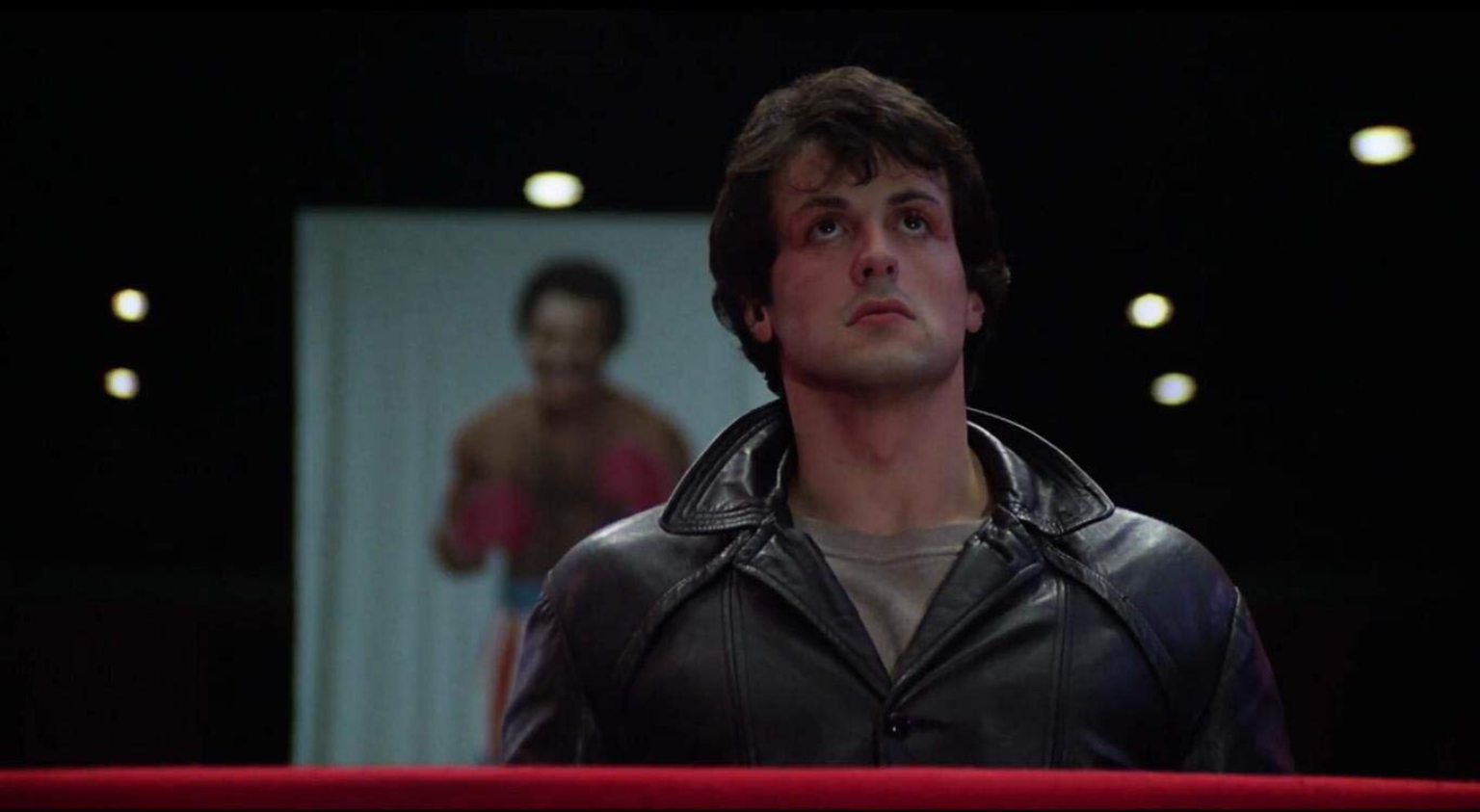
As the fight draws closer, Rocky must push himself to the limits to not only regain his fitness, but to develop the belief that he actually belongs in the championship ring with such a formidable opponent. To class Apollo Creed as the villain of the piece would surely be a disservice to the character. Carl Weathers’ role is purely that of the protagonist, never the villain. In fact, were it not for Creed’s ingenuity, the Italian Stallion would still find himself slugging away in the small, smoky fight venues that don’t lead to World Title fights. One could view Apollo setting up the match as a cynical money-making exercise and in a way, it is. But there is also a sentimental element to it, giving the local nobody their fifteen minutes of fame. You can tell from the champ’s jovial appearance at the pre-recorded press conference that’s shown on Adrian’s small television set that Apollo doesn’t perceive any form of threat from Balboa. He simply expects this to be a glorified sparring session, where he can entertain his legion of fans and allow the locals some semblance of pride, to see “one of their own” sharing the ring with the champ. He will carry the local Palooka for a few rounds and then put him out of his misery. Maybe he’ll get lucky and get stopped on a cut before the champ can knock him out? There is no malice from Creed. It’s just another day at the office for him. Even the pre-match warnings from his trainer, concerning how brutally Rocky is training by breaking the ribs of frozen slabs of beef, fall on deaf ears. Creed is happy to treat Balboa in the role that Rocky initially thought he was being offered, a sparring partner, albeit on a much grander and very public scale.
Creed bares Balboa no ill will prior to the match and only finds the gusto to mount a substantial attack against him when he’s forced to pick himself off the canvas, as Rocky shocks the watching world by dropping the champion with a powerful uppercut in the opening round. Much like a suddenly threatened Lion, the champion immediately pounces into action, thrashing out his leather clad claws, to not only cut, but also send Rocky crashing to the ring floor before the bell sounds to conclude the round. Balboa has truly awoken this until now, sleeping beast and he will no longer be toyed with by this King of the pugilistic jungle.
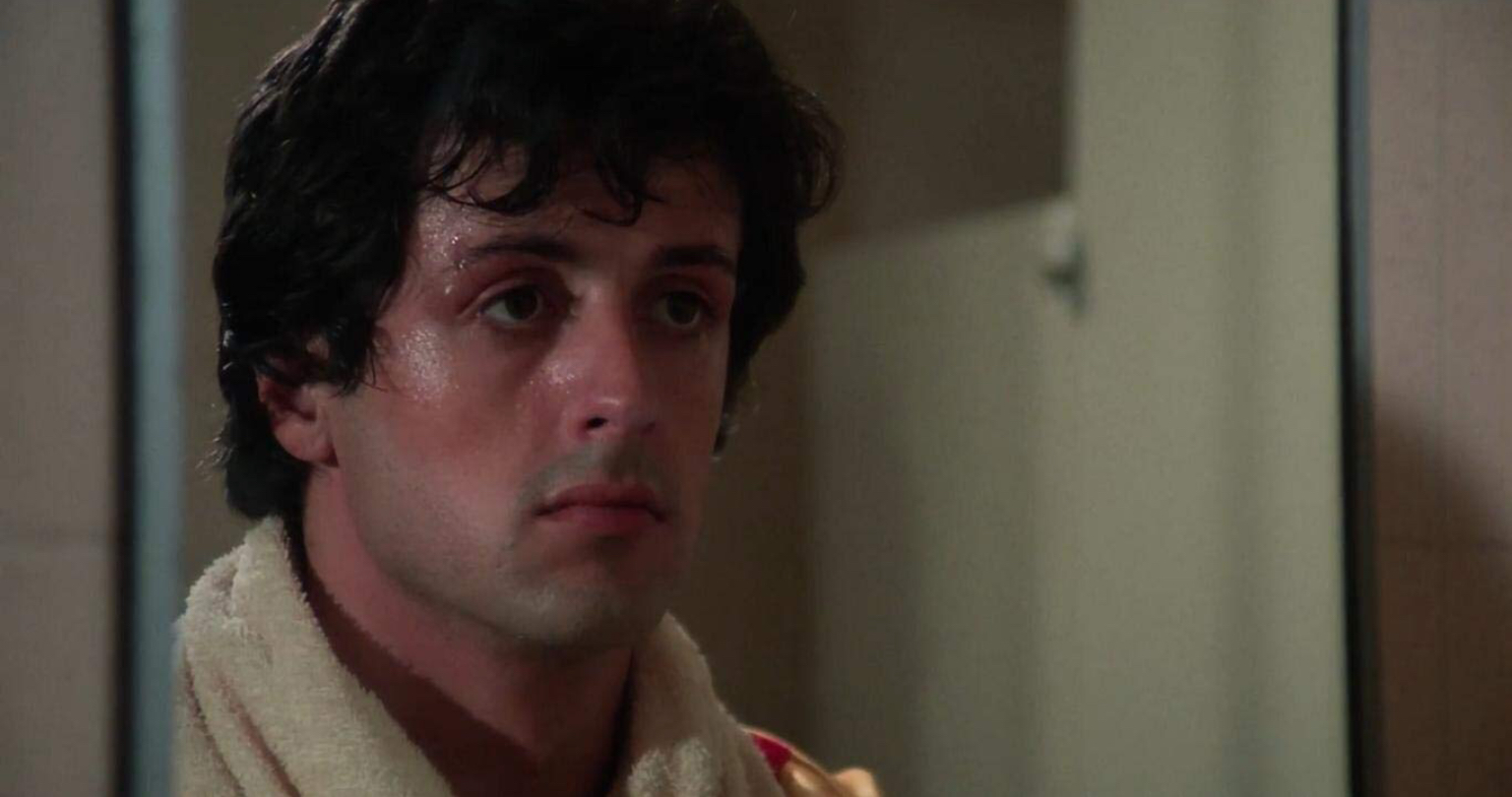
The battle plans now fully drawn, the two men engage in a battle of skills, wills and determination, each playing to their own strengths whilst seemingly succumbing to that of his fellow combatant. Both men are now struggling to achieve their aims. Creed to somehow stop the surprisingly difficult and previously unforeseen challenge he now faces, whilst Balboa must use every bit of energy inside of his ever-growing battle-damaged body to take the fight to the champion head on. To somehow take everything that his far superior opponent can throw at him. To break through an almost impossible barrage of punishment and achieve his aim of going the distance with Creed. To achieve something that no other boxer has ever done before. To Balboa, victory means much more than actually winning the bout. It’s about him proving to himself that he belongs in that championship ring in the first place. Rocky has no desire to hear the final decision announcements of the judges, as he yells aloud for Adrian to once again be at his side
Shot on a much smaller budget than originally planned and with an unknown star, director John G. Avildsen really had his work cut out for him and so much of the film was shot through a mixture of his skill and ingenuity. Many of the now famous training scenes were filmed Guerrilla style, where the director would simply throw Stallone out of the filming wagon and instruct him to “run faster!” Avildsen would deftly plan his shooting schedule to climax as trains passed by at the vital time, to add his own form of gravitas and provide punctuation to a scene. Stallone would also provide his on the spot improvisation to assist the director. Perhaps the most famous example of this being his hasty re-write of Rocky and Adrian’s first date, when the production could no longer afford the extra’s required to film the scene which was to be set in a busy ice rink in its original concept. The now familiar, finished scene of Rocky bribing a Zamboni driving caretaker to allow his date ten minutes on the ice, again lends to their almost childlike romance. As Rocky jogs alongside the shy and quiet Adrian and they open up to each other about their lives and we are provided with the subtle symbolism of them each finding that they have finally found somebody to lean on with the ice representing the slippery face of their uphill battle to find happiness in life.
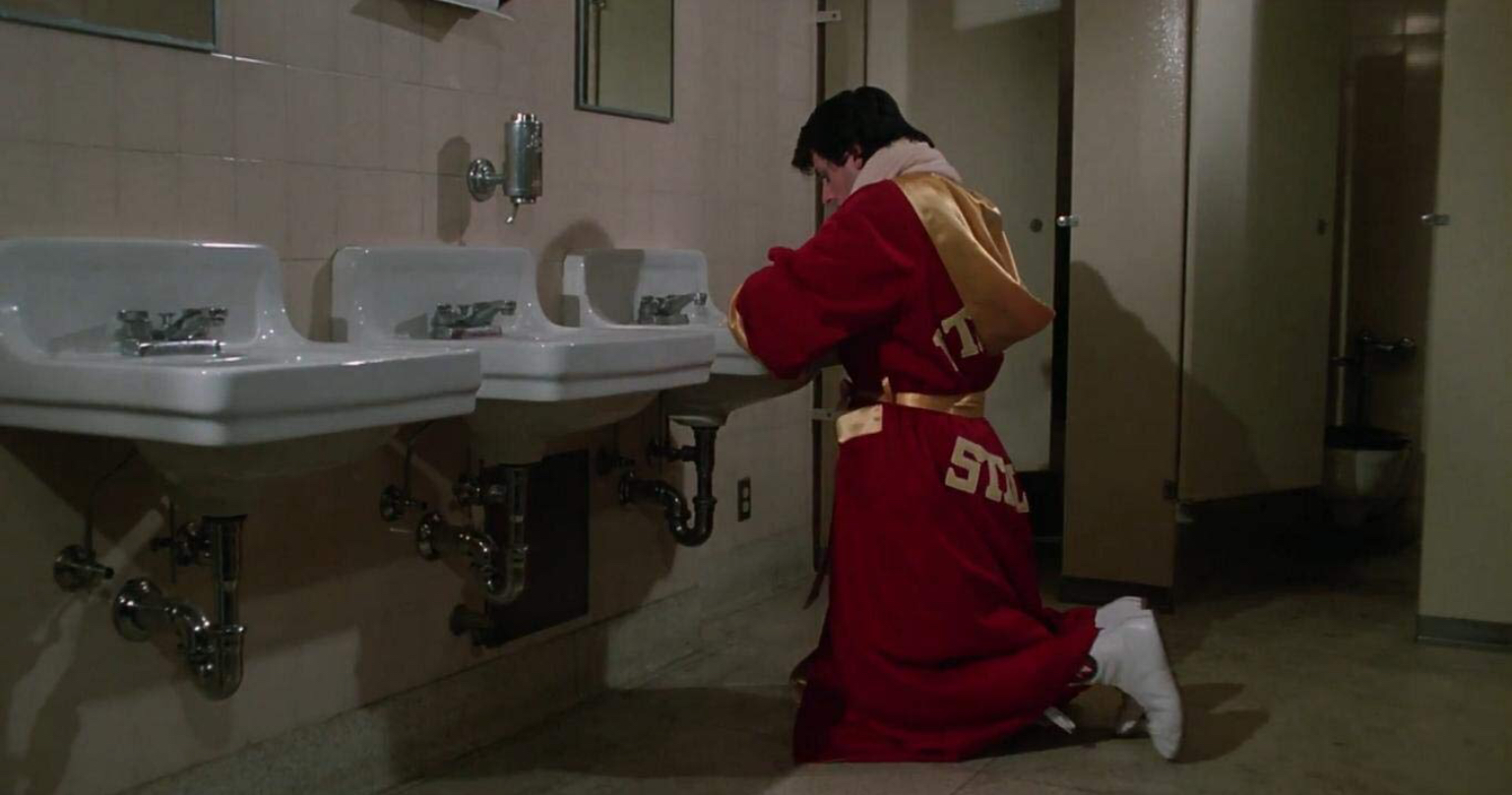
The revolutionary new (and fairly untested at the time) form of filming via the employment of a steady-cam meant that money was also saved on not having to lay down tracks for cameras to roll on and the director masterfully displays its worth within several of the films key scenes, most importantly being that the audience was allowed to almost run side by side with Balboa as he mounts his huge climb of the Philadelphia Art Museum’s steps in what must now rank as one of cinemas most recognizable pieces of celluloid magic moments, coupled with the fantastic score by Bill Conti, in what has now also become one of the most recognized musical themes to a movie.
Conti would later reveal that he’d actually been the third-choice composer for the movie, when others initially baulked at the rather tiny sum of $25,000 to provide an orchestral soundtrack. Conti initially composed a piece of music roughly thirty seconds long for the training montage, but found himself continuing to add to the piece when seeing all the training footage that had been filmed by Avildsen. Conti was forced to become extraordinarily frugal in his finished work, taking around three hours to record the entire score and even getting staff members from a local radio station that his wife was working for at the time to record the lyrics to “Gonna Fly Now” when they were on their lunch break.
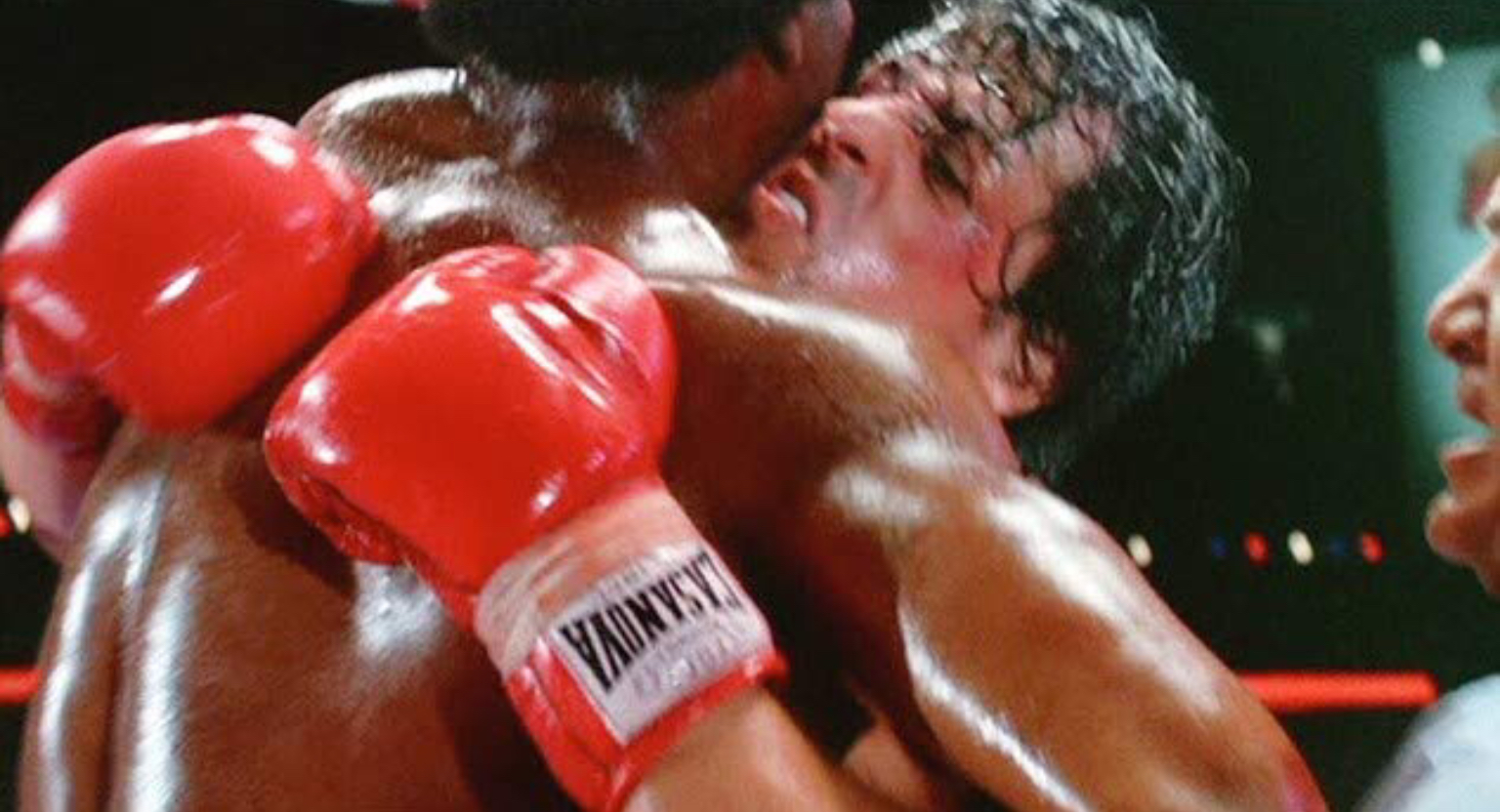
The studio had no real expectations of the audience reaction that the film would go on to achieve, but Rocky ended up being a runaway success. The film scored huge at the box office with a worldwide receipt of $225 million against its meagre $1 million dollar budget. Rocky also found critical acclaim and would go on to pick up the 1977 Academy Awards for Best Picture, Best Director and Best Film Editing. Stallone, much like the character he had created, would also find himself suddenly thrust into the spotlight with his performance nabbing a nomination for Best Actor, alongside his co-stars, Talia Shire who was nominated for Best Actress and Burt Young and Burgess Meredith who each found themselves nominated for Best Supporting Actor.
But for all the success of awards and reviews, something far more important had been achieved here. In what will be remembered as a classic piece of 1970’s cinema, Stallone had given the audience a character that would forever be used as an inspirational template for both film and life alike. He had showed that the underdog could succeed and had brought back to cinemas the feel-good factor that had been missing in a more cynical post-Vietnam decade up to that point. To this day the phrase “A Rocky Story” is still used to describe a come from behind victory or an upsetting of the odds in some way. Rocky shows the world that no matter how down on your luck you are, that an opportunity to turn your life around for the better could be just around the corner and just as importantly, to never pass up on an opportunity once it’s presented you. It was probably impossible to believe in 1976 that this character would still be present and relevant to audiences today, 42 years on. Not only still in the public consciousness, but also still appearing on the big screen in new films in the long-running series.
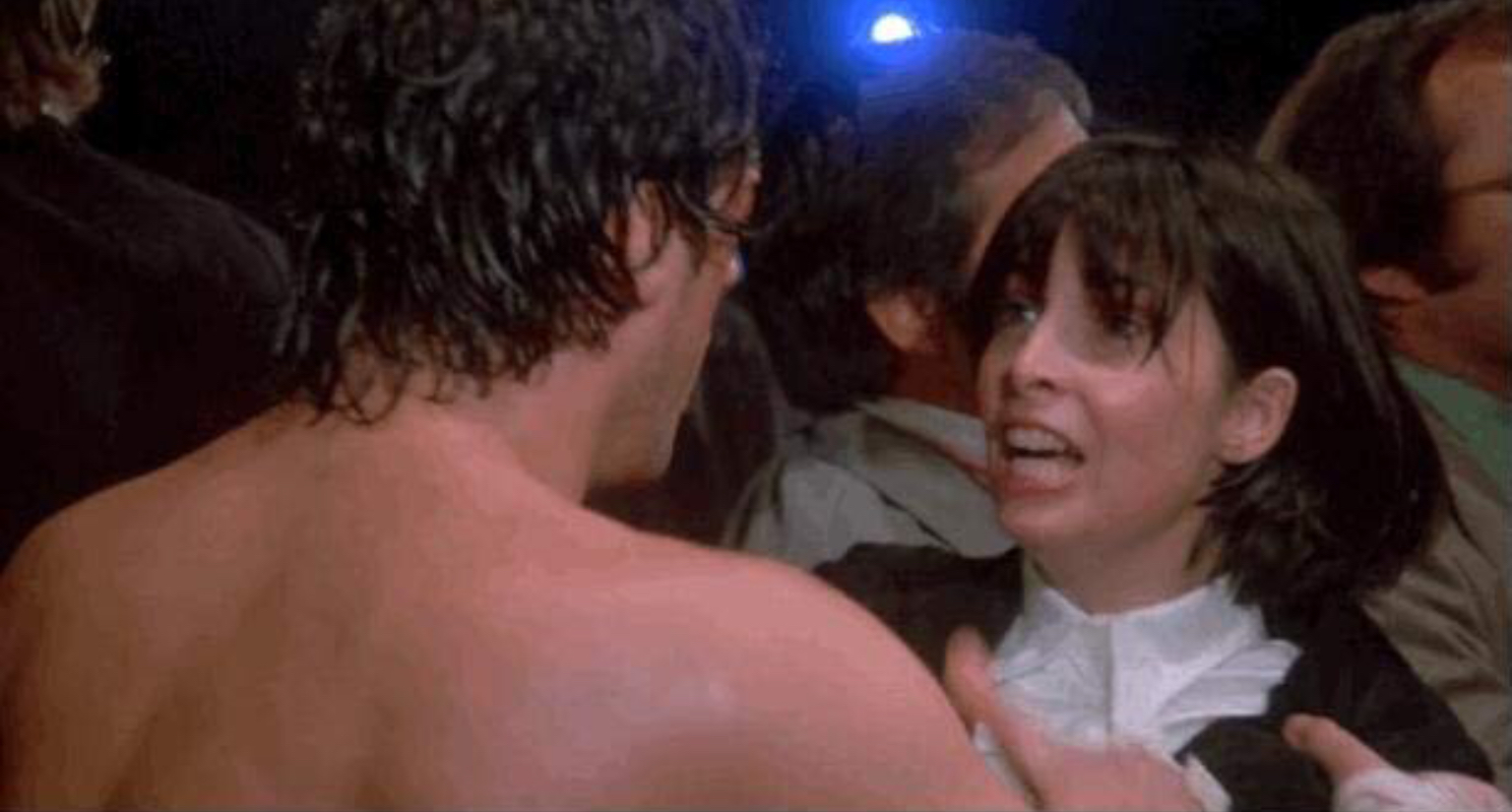
Rocky is the very definition of the long shot paying off and to this day, the tale of this particular underdog continues to inspire and entertain, proving that with a great script and powerful, committed performances, a film doesn’t need a massive budget or established star power to succeed. Rocky will forever be an iconic role for Sylvester Stallone and as both a character and a film, a massive inspiration, not just to aspiring filmmakers, but to those in any walk of life who dream to be and do more than others say they ever can.
Film ‘89 Verdict – 10/10

